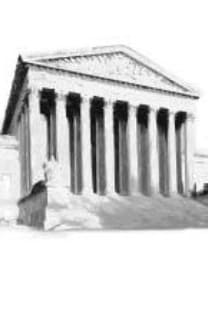Hume: Estetik Değer Biçmenin İki Yönü
Hume’un zihninde beğeni sorununun nasıl
çözümlendiğini keşfedebilmenin en kestirme yolu, onun Beğeni Standartları Hakkında (Of
the Standard of Taste) başlıklı denemesinde – bundan sonra Deneme olarak kısaltılacaktır – açtığı
kapıdan girmektir. O, Deneme’de, açık
bir biçimde, estetik değer biçmenin öznel bir doğası olduğunu iddia etse de,
beğeni yargılarının değerlendirilmesine zemin hazırlayan bir beğeni standardına
ulaşmayı hedefler. Onun bu girişimi, böylece, beğeni anlaşmazlıklarını çözüme
kavuşturmak bir yana, beğeni sorununu içinden çıkılmaz bir hale getirmiştir. Bu
bakımdan, Deneme’nin onu dezavantajlı
bir konuma yerleştirdiği eleştirmenler tarafından sıklıkla dile getirilir. Yine
de insan anlayışı onun çabasını izah eden felsefi/düşünsel bağlamın taslağını
çizer. Buna bağlı olarak, beğeni yargıları öznel bir değere atıfta bulunsa da,
insan doğasının evrensel ilkeleri bir beğeni standardının varlığını daha
anlaşılır hale getirmektedir. Bu çalışma, ilk bölümde, Hume’un beğeni
teorisindeki estetik değeri belirleyen öznel çerçeveyi açık kılmayı
hedeflemektedir. İkinci bölümde, ilk bölümde elde edilen sonuçlar çerçevesinde,
beğeni standardının, onun teorisinde, evrensel insan doğası ile uyumlu olarak
nasıl karakterize edildiği izah edilecektir.
Anahtar Kelimeler:
Duygu, Beğeni, İnsan Doğası, Güzellik, Beğeni Standardı
Hume: Two Directions of the Aesthetic Evaluation
The
shortest way to discover how the problem of taste in Hume's mind was resolved
is to enter through the door he opened in his essay, Of the Standard of Taste – that will hereafter be shortened as the Dissertation. Although he openly
claims that aesthetic appraisal is a subjective nature in the Dissertation, he aims
to achieve a standard of taste that lays the groundwork for the evaluation of
the judgements of taste. His attempt thus, let alone find a solution to
disagreements of taste, makes the problem of taste worse. In this regard, it is
often expressed by critics that the
Dissertation places him in a disadvantageous position. Even so, his view on
human being sketches the philosophical/intellectual context which accounts for
his attempt. Correspondingly, even though judgements of taste attribute to a
subjective value, the universal principles of human nature make an existence of
the standard of taste more understandable. This study, in the first section,
aims to crystallize the subjective framework, which designates the aesthetic
value in Hume’s theory of taste. In the second section, within the frame of the
outcomes which are achieved in the former section, it will be elucidated, in
his theory, how the standard of taste is characterized in line with the
universal human nature.
Keywords:
Sentiment, Taste, Human Nature, Beauty, the Standard of Taste,
___
- DELEUZE, Gilles (2001). Empiricism and Subjectivity. An Essay on Hume’s Theory of Human Nature, trans. Constantin V. Boundas, New York: Columbia University Press.
- FERRY, Luc (2012). Homo Esteticus: Demokrasi Çağında Beğeninin İcadı, çev. Devrim Çetinkasap, İstanbul: Pinhan Yayıncılık.
- HUME, David (1960). A Treatise of Human Nature, ed. by L. A. Selby-Bigge, Oxford: Clarendon Press.
- HUME, David (1912). An Inquiry Concerning the Principles of Morals, Chicago: The Open Court Publishing Co.
- HUME, David (1921). An Inquiry Concerning Human Understanding and Selections form a Treatise of Human Nature, Chicago: The Open Court Publishing Company.
- HUME, David (1998). “Of The Standard of Taste”, David Hume-Selected Essays, ed. by Stephen Copley & Andrew Edgar, New York: Oxford University Press.
- HÜNLER, Hakkı (2011). Estetik’in Kısa Tarihi, Ankara: Doğu Batı Yayınları.
- KIVY, Peter (1967). “Hume’s Standard of Taste: Breaking The Circle”, Biritish Journal of Aesthetics, 7(1): 57-65.
- KULENKAMPFF, Jens (1990). “The Objectivity of Taste: Hume and Kant”, Noûs, 24(1): 93-110.
- NUTKU, Uluğ (1998). İnsan Felsefesi Çalışmaları, İstanbul: Bulut Yayınları.
- NUTKU, Uluğ (2016). Yeniçağ Felsefesinde A PRİORİ Problemi, Ankara: Doğu Batı Yayınları.
- SHELLEY, James (1994). “Hume’s Double Standard of Taste”, The Journal of Aesthetics and Art Criticism, 52(4): 437 – 445.
- TAŞKIN, Ali (2007). Hume Araştırmaları, İstanbul: Birey Yayıncılık.
- TOWNSEND, Dabney (2001). Hume’s Aesthetic Theory: Taste and Sentiment, New York and London: Routledge.
- WARNOCK, Mary (1978). Imagination, Berkeley and Los Angeles: University of California Press.
- WIEAND, Jeffrey (1984). “Hume’s Two Standards of Taste”, The Philosophical Quarterly, 34(135): 129-142.
- Yayın Aralığı: Yılda 2 Sayı
- Yayıncı: Bursa Uludağ Üniversitesi
Sayıdaki Diğer Makaleler
Sıfır Noktası Olarak Kökenin Ulaşılamazlığı
Bellekte Dilsel Bağlam Bağımlılığı Sorunlarına Düşünce Dili Hipotezi Bir Çözüm Sunabilir Mi?
Derrida’nın Eczanesi: Reçeteyi Okuyamamak
Post-Modern Epistemoloji Otopsisine Karşı Bilgi Kuramsal Bir Tez: Kant-Popper-Rorty
Toplumsallık, Anlam ve Bir Sosyal İnşa Olarak İnsan
Hıristiyanlıkta İncil Yorumlarının Tarihsel Kaynakları
Seneca’nın Erdem ve Bilgelik Anlayışının Ekolojik Etiğe Katkısı
Aristoteles Düşüncesinde Politik Biyoloji ve Prohairesis
Bir Töz Metafiziği Tartışması: Leibniz’in Spinoza Eleştirisi
